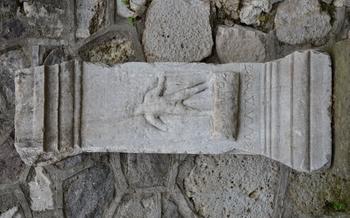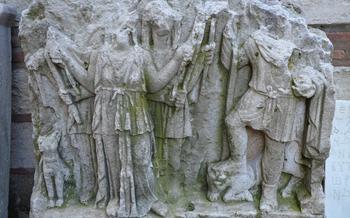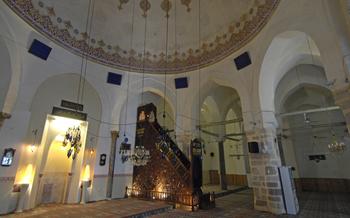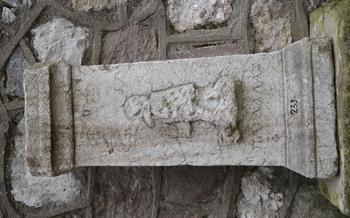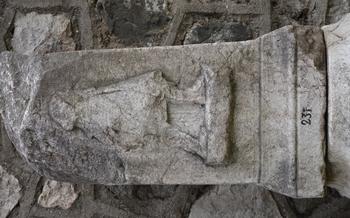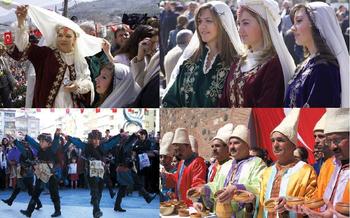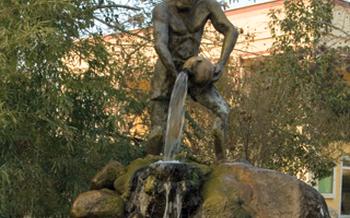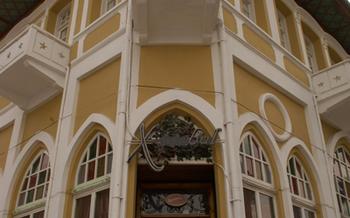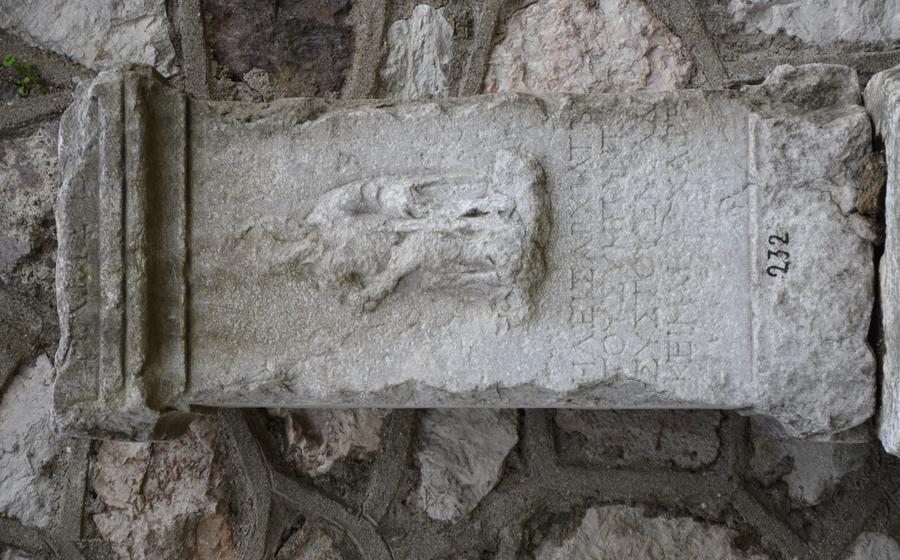
The Historical Murat Mountain Thermal Springs
- The Antiquity of Murat Mountain Thermal Springs
- Location and Accessibility
- The Healing Properties of the Thermal Waters
- The Bathing Experience
- Accommodations and Amenities
- Things to Do Nearby
- Best Time to Visit
- Budgeting for Your Trip:
- Packing Essentials
- Health and Safety
- Cultural Insights
- Historical Significance
- Local Cuisine
- Solo Travel
- Insider Tips
The Antiquity of Murat Mountain Thermal Springs
Murat Mountain Thermal Springs, nestled in the heart of Turkey's Manisa province, boasts a rich history and cultural significance that dates back to ancient times. Legends and myths surround these springs, weaving a tapestry of folklore and tradition. According to one legend, a brave warrior named Murat, while battling a fierce dragon, was severely wounded. He sought refuge in the healing waters of the springs and emerged rejuvenated, his wounds miraculously healed. This tale echoes the belief in the therapeutic properties of the thermal waters, which have been revered for centuries for their ability to cure various ailments. Archaeological excavations in the area have unearthed ancient ruins, artifacts, and inscriptions, providing tangible evidence of the springs' historical significance and the civilizations that have flourished here over the millennia.
Location and Accessibility
The Murat Mountain Thermal Springs are situated in the heart of the picturesque Manisa province, nestled amidst the stunning landscapes of western Turkey. The springs are conveniently located just a short drive from the bustling city of Manisa, making them easily accessible for both domestic and international visitors. The closest airport is Izmir Adnan Menderes Airport (ADB), which is approximately a 45-minute drive from the springs. Several transportation options are available to reach the site, including rental cars, taxis, and organized tours. Guided tours are highly recommended for those who wish to delve deeper into the history and cultural significance of the thermal springs. These tours typically include round-trip transportation, entrance fees, and the services of a knowledgeable guide.
The Healing Properties of the Thermal Waters
The thermal waters of Murat Mountain have long been renowned for their remarkable healing properties. The secret lies in their unique chemical composition and temperature. The waters are rich in minerals such as calcium, magnesium, and bicarbonate, which are essential for maintaining good health. The temperature of the springs, which ranges from 30 to 50 degrees Celsius, is optimal for promoting relaxation and therapeutic effects.
Various ailments can be treated with the thermal waters of Murat Mountain. These include rheumatism, arthritis, skin diseases, respiratory problems, and gynecological disorders. The waters have a soothing and anti-inflammatory effect, which helps to reduce pain and stiffness. They also stimulate blood circulation and improve the overall functioning of the body's systems.
To maximize the therapeutic benefits of the thermal waters, visitors can avail themselves of the medical facilities and services offered at the springs. These include hydrotherapy, massage therapy, and physiotherapy. Qualified medical professionals are on hand to provide guidance and ensure that each visitor receives the best possible care.
The healing properties of the thermal waters of Murat Mountain have been attested to by numerous visitors over the years. Many have experienced significant improvements in their health conditions after undergoing a course of treatment at the springs. Testimonials from satisfied visitors are a testament to the efficacy of the thermal waters in alleviating pain, promoting relaxation, and restoring vitality.
The Bathing Experience
The Murat Mountain Thermal Springs offer visitors a truly unique and unforgettable bathing experience. The warm, mineral-rich waters are said to have therapeutic properties and can help alleviate a variety of ailments. Visitors can choose from a variety of thermal pools, each with its own unique temperature and mineral content. Some pools are designed for private bathing, while others are open to the public.
Ancient bathing rituals and traditions are still practiced at the thermal springs. Visitors can participate in these rituals, which include bathing in the thermal waters, applying mud masks, and receiving massages. These rituals are believed to promote relaxation, rejuvenation, and healing.
It is important to follow proper etiquette and safety guidelines when bathing in the thermal waters. Visitors should shower before entering the pools, and they should avoid swimming or splashing in the water. It is also important to drink plenty of water to stay hydrated.
The bathing experience at the Murat Mountain Thermal Springs is a truly unique and unforgettable one. Visitors can relax and rejuvenate in the warm, mineral-rich waters, and they can also learn about the ancient bathing rituals and traditions that are still practiced at the site.
Accommodations and Amenities
The Murat Mountain Thermal Springs area offers a variety of accommodation options to suit different budgets and preferences. From cozy guesthouses to luxurious resorts, visitors can choose the perfect place to stay and enjoy a comfortable and relaxing experience. Many of these accommodations are located within walking distance of the springs, making it easy for guests to access the thermal pools and other amenities.
The hotels and resorts in the area offer a range of services and amenities to ensure a pleasant stay for their guests. These may include comfortable rooms with private balconies or patios, air conditioning, flat-screen TVs, and free Wi-Fi. Some accommodations also have swimming pools, fitness centers, spas, and restaurants on-site, providing guests with everything they need for a relaxing and enjoyable stay.
In addition to hotels and resorts, there are also several guesthouses and hostels available for budget-conscious travelers. These offer basic but comfortable accommodations at a more affordable price. Many of these guesthouses are family-run and offer a warm and welcoming atmosphere, allowing guests to experience Turkish hospitality firsthand.
For those who prefer a more independent stay, there are also several self-catering apartments and villas available in the area. These offer the convenience of having your own kitchen and living space, allowing you to prepare your own meals and enjoy the flexibility of cooking at your leisure.
When choosing accommodation near the Murat Mountain Thermal Springs, it is important to consider your budget, preferences, and the time of year you are visiting. During the peak season (July and August), prices tend to be higher, so it is advisable to book in advance to secure the best deals.
Things to Do Nearby
For those seeking a break from the soothing waters, the Manisa region offers a wealth of historical and cultural attractions. Explore the ancient city of Sardis, once the capital of the Lydian kingdom, with its impressive ruins and artifacts. Visit the Manisa Museum to delve into the region's rich history and admire its collection of archaeological treasures. For a taste of local culture, wander through the vibrant Manisa Market, where you can haggle for traditional handicrafts, textiles, and fresh produce.
If you're an outdoor enthusiast, the Manisa region is a paradise waiting to be discovered. Lace up your hiking boots and embark on scenic trails that wind through lush forests and offer breathtaking views of the surrounding mountains. For a more adrenaline-pumping experience, try paragliding from the slopes of Murat Mountain and soar above the stunning landscape.
Plan a day trip to nearby cities like Izmir, the vibrant coastal metropolis, or Akhisar, known for its ancient ruins and delicious cuisine. Immerse yourself in the local festivals and celebrations, where you can witness traditional dances, music, and performances that showcase the region's rich cultural heritage.
Best Time to Visit
The best time to visit Murat Mountain Thermal Springs is during the shoulder seasons, from April to May and from September to October. During these months, the weather is generally mild and pleasant, with warm days and cool nights. This makes it ideal for both bathing in the thermal waters and exploring the surrounding area.
In the summer months (June, July, and August), the weather can be quite hot and humid, which may make it uncomfortable to spend long periods of time outdoors. However, the thermal pools are still open during these months, and there are plenty of shady spots to relax in.
In the winter months (November, December, and January), the weather can be cold and rainy, and the thermal springs are not as busy. However, this can be a good time to visit if you are looking for a more peaceful and secluded experience.
Throughout the year, there are a number of festivals and events held in the Manisa region, which can be a great way to experience the local culture. Some of the most popular festivals include the Manisa Mesir Festival in May, the Salihli Grape Festival in September, and the Turgutlu Olive Festival in October.
To avoid the crowds, it is best to visit the thermal springs during the week or early in the morning. This is especially true during the summer months. If you are visiting on a weekend or holiday, be prepared for large crowds and long lines.
Budgeting for Your Trip:
The cost of a trip to Murat Mountain Thermal Springs can vary depending on your travel style and preferences. Here's a general breakdown of expenses to help you plan your budget:
-
Accommodation: Lodging options range from budget-friendly guesthouses to luxurious resorts. Expect to pay around $20-$50 per night for a basic room and $100-$200 for a high-end resort.
-
Food: Manisa offers a variety of dining options to suit all budgets. Local meals can be found for as low as $5-$10, while upscale restaurants may charge $20-$30 per meal.
-
Transportation: If you're flying, round-trip airfare from major cities to Manisa starts around $200-$300. Local transportation options include buses and taxis, which are relatively inexpensive.
-
Activities: Entrance fees to the thermal springs typically range from $5-$Additional activities such as massages, spa treatments, and excursions to nearby attractions may cost extra.
-
Tips for Saving Money: To stretch your budget, consider staying in hostels or guesthouses, eating at local restaurants, cooking your own meals, and taking advantage of free activities like hiking and exploring the surrounding nature. Look for package deals that often include accommodation, meals, and spa treatments at discounted rates.
Remember, the key to budgeting is flexibility and planning. Prioritize your must-do activities and allocate funds accordingly. With a little research and smart choices, you can enjoy a memorable and affordable trip to Murat Mountain Thermal Springs.
Packing Essentials
For a comfortable and enjoyable visit to the Murat Mountain Thermal Springs, adequate preparation is crucial. Firstly, pack clothing suitable for the weather conditions and planned activities. Comfortable and loose-fitting clothing is recommended for exploring the surroundings, while swimwear is essential for bathing in the thermal pools.
Secondly, remember to bring towels and toiletries. Most accommodations provide towels, but it's always advisable to have your own for personal hygiene. Additionally, pack toiletries such as shampoo, conditioner, and soap, as they may not be provided.
Thirdly, sun protection is vital, especially during the summer months. Pack sunscreen with a high SPF, sunglasses, and a hat to shield yourself from the sun's harmful rays. Insect repellent is also recommended to keep away pesky mosquitoes and other insects.
Lastly, don't forget your camera to capture the picturesque landscapes and memorable moments during your trip. Ensure you have a charger and a travel adapter suitable for Turkish power outlets. A first-aid kit is also essential for minor injuries or ailments.
Insider Tip: - Pack a reusable water bottle to stay hydrated throughout the day. Tap water is generally safe to drink in Turkey, but bottled water is widely available for purchase.
Health and Safety
The thermal waters of Murat Mountain are generally safe for bathing, but it is essential to take precautions to ensure a healthy and enjoyable experience. Firstly, it is recommended to consult with a physician before using the thermal waters, especially if you have any underlying health conditions. Secondly, it is crucial to follow the guidelines and instructions provided by the management of the thermal springs. These guidelines may include limiting the duration of your bath, avoiding submerging your head, and drinking plenty of water to stay hydrated.
Finally, it is important to be aware of the potential risks and side effects associated with bathing in thermal waters. Although rare, these may include skin irritation, dizziness, and nausea. If you experience any discomfort or adverse effects, discontinue bathing immediately and seek medical attention if necessary.
Cultural Insights
The Murat Mountain Thermal Springs hold a special place in local folklore and traditions. According to legend, the springs were discovered centuries ago by a shepherd boy named Murat who stumbled upon them while searching for his lost sheep. Upon bathing in the warm, soothing waters, Murat was miraculously cured of a chronic illness. News of his miraculous recovery spread like wildfire, and soon people from all over the region began flocking to the springs in search of healing and rejuvenation.
Over the centuries, the thermal springs have become deeply intertwined with local customs and beliefs. Many locals believe that the waters possess mystical powers and often perform rituals and ceremonies to honor their healing properties. During the annual Thermal Springs Festival, which takes place every summer, thousands of pilgrims gather at the springs to celebrate their healing powers and to give thanks for the blessings they have received.
Visitors to the springs will have the opportunity to witness these unique traditions and customs firsthand. By interacting with locals, participating in festivals, and learning about the region's rich history, visitors can gain a deeper understanding of the cultural significance of the Murat Mountain Thermal Springs.
Historical Significance
The Murat Mountain Thermal Springs are steeped in historical significance, with numerous ancient ruins and artifacts discovered in the surrounding area. These discoveries have shed light on the rich cultural heritage of the region and its connection to various civilizations throughout history. Among the most notable findings are ancient coins, pottery fragments, and inscriptions that date back to the Roman and Byzantine periods. These artifacts provide valuable insights into the daily lives and customs of the people who once inhabited this region.
Furthermore, the thermal springs themselves have been mentioned in historical texts and legends, indicating their importance as a sacred and healing site for centuries. According to local folklore, the springs were discovered by a legendary figure named Murat, who was said to have been cured of a serious illness after bathing in the healing waters. This tale has been passed down through generations and has contributed to the mystical aura that surrounds the springs.
For history buffs and archaeology enthusiasts, visiting the Murat Mountain Thermal Springs offers a unique opportunity to explore the region's rich past and uncover the secrets of ancient civilizations. Several historical sites and museums are located nearby, allowing visitors to delve deeper into the cultural heritage of Manisa and Turkey.
Local Cuisine
Delight in the Flavors of Manisa: A Culinary Journey
Manisa, the home of the renowned Murat Mountain Thermal Springs, is not only a place for relaxation and rejuvenation but also a culinary paradise, offering a rich tapestry of flavors that tantalize the taste buds. The region's cuisine is a harmonious fusion of traditional Turkish flavors with unique local influences, creating a culinary experience that is both authentic and unforgettable.
Indulge in the aromatic delights of Manisa's signature dish, keşkek, a hearty dish made from tender lamb or chicken slow-cooked with cracked wheat, resulting in a creamy, flavorful delicacy. Delight in the tantalizing aroma of Manisa's delectable pide, a flatbread topped with a variety of fillings, ranging from savory minced meat to aromatic vegetables.
For a taste of local tradition, savor the irresistible taste of Manisa's famous üzüm pekmezi, a sweet and viscous grape molasses that adds a unique depth of flavor to desserts and dishes. Indulge in the refreshing crunch of Manisa's fresh fruits, particularly the sweet and juicy grapes that are grown in abundance in the region.
Discover the culinary treasures of Manisa by venturing into the local markets, where you can find an array of fresh produce, spices, and traditional Turkish delights. Engage with the friendly locals, who are always eager to share their culinary wisdom and guide you towards the hidden gems of the region's cuisine.
Whether you prefer to dine in traditional Turkish restaurants or savor the flavors of home-cooked meals in local guesthouses, Manisa offers a culinary journey that will leave you craving for more. Embrace the warmth and hospitality of the Manisa people as you embark on a culinary adventure that will tantalize your taste buds and create lasting memories.
Solo Travel
As a solo traveler, visiting the Murat Mountain Thermal Springs can be a rewarding and enriching experience. Here are some tips to make the most of your journey:
- Safety First:
- Always be aware of your surroundings and trust your instincts.
- Avoid walking alone at night and keep your valuables safe.
-
Let someone know your travel plans and check in regularly.
-
Embrace Solitude:
- Embrace the opportunity to spend time with yourself and reflect.
-
Take leisurely walks, enjoy the tranquil atmosphere, and rejuvenate in the thermal pools.
-
Meet New People:
- Strike up conversations with fellow travelers or locals at the springs.
- Join group activities or guided tours to meet like-minded individuals.
-
Attend local events and festivals to immerse yourself in the community.
-
Solo Bathing Etiquette:
- Respect the privacy of others and maintain a comfortable distance.
- Avoid talking loudly or disturbing other bathers.
- Be mindful of your belongings and keep them secure.
Insider Tips
For an unforgettable experience, venture off the beaten path and explore the hidden gems near the Murat Mountain Thermal Springs.
-
Discover the secluded Kırkağaç Waterfall, a breathtaking natural wonder tucked away in the lush forests. Take a refreshing dip in its crystal-clear waters and soak in the tranquil ambiance.
-
Embark on a culinary adventure and indulge in the authentic flavors of Manisa cuisine at local eateries frequented by the locals. Savor the tantalizing aromas of freshly baked pide and gözleme, traditional Turkish flatbreads filled with delicious fillings.
-
Uncover the rich history of the region at the Manisa Museum, home to a fascinating collection of artifacts that narrate the captivating story of Manisa's past. Immerse yourself in the grandeur of ancient civilizations and learn about their profound influence on the region.
-
Experience the thrill of paragliding over the picturesque landscapes of Manisa. Soar through the air like a bird and marvel at the breathtaking views of the thermal springs and the surrounding countryside.
-
Engage with the friendly locals and learn about their unique customs and traditions. Take part in lively conversations, share stories, and gain insights into their way of life. Embrace the warmth and hospitality that define the Turkish culture.
